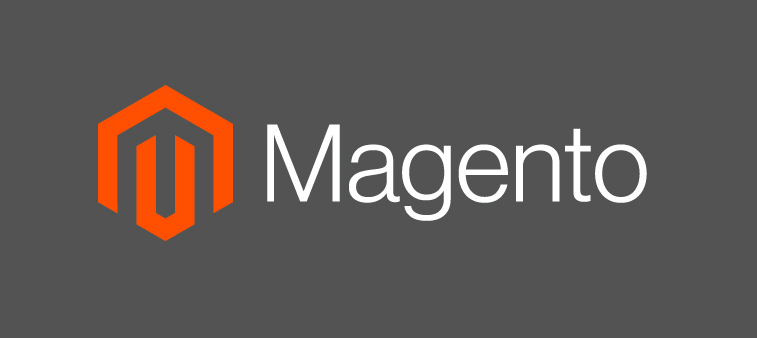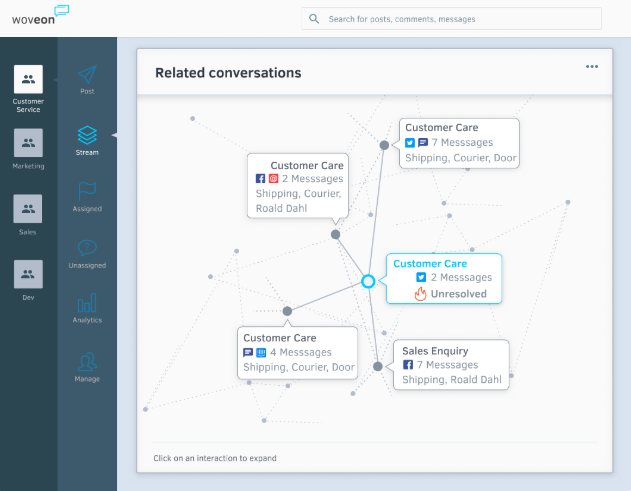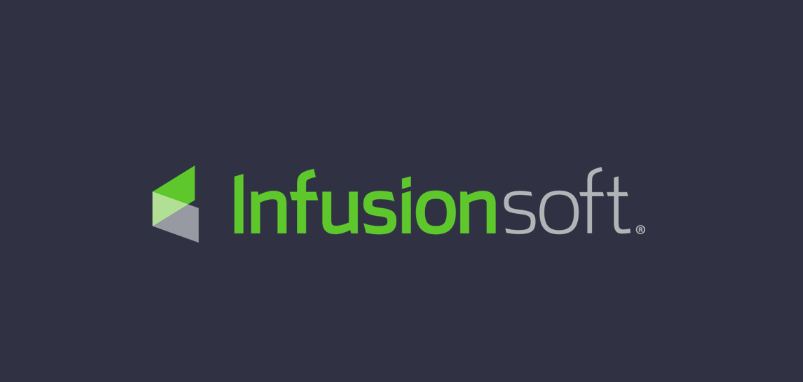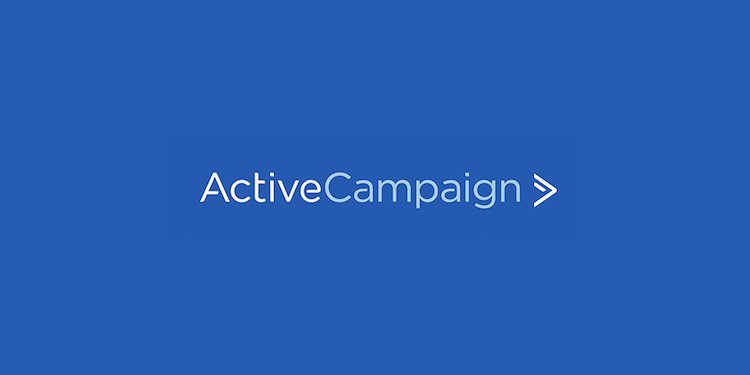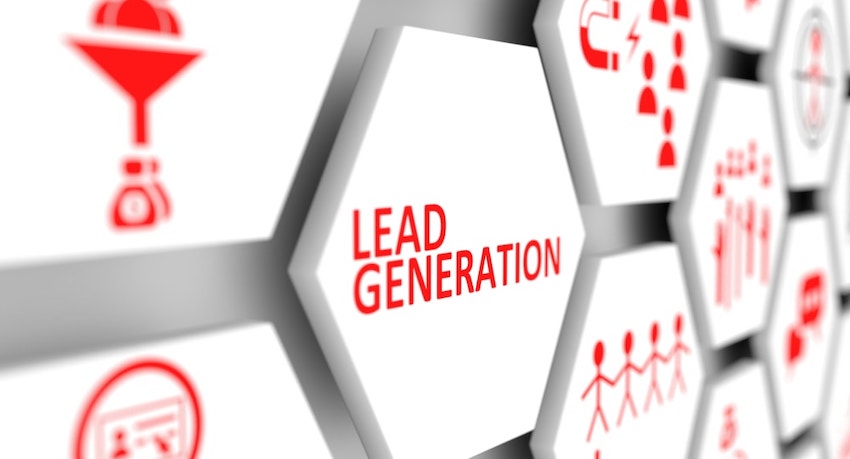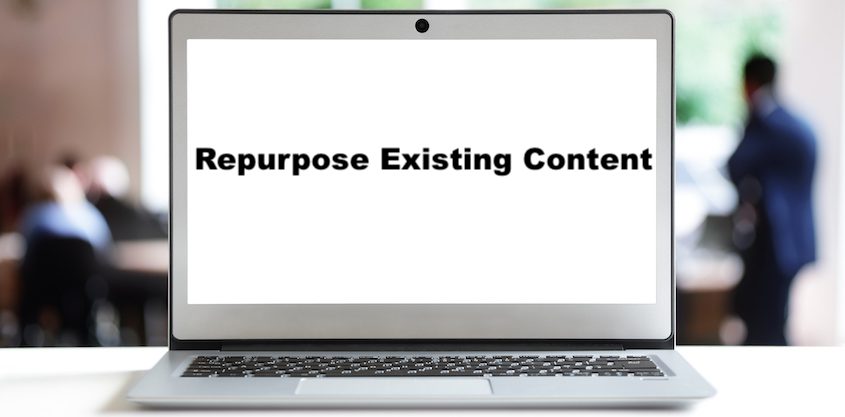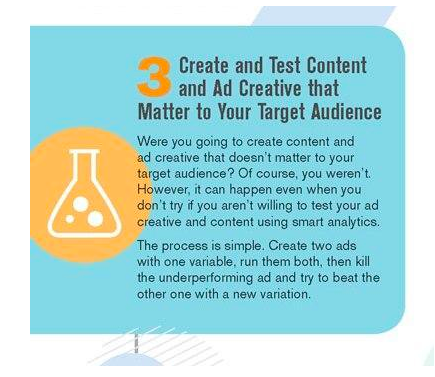Year: 2019
Shopify vs WooCommerce vs Prestashop vs Magento
These are some of the best e-commerce solutions available on the market. Let’s compare Shopify, BigCommerce, Prestashop and Mangeto.
Top 4 eCommerce Platform Comparison:
Let’s see which one is best for which purpose.
1. Shopify
Advantages:
- It is ideal for small projects.
- It is native eCommerce software.
- Very easy to make beautiful looking stores.
- You do not need hosting since it is cloud based
- In a few clicks you have a shop mounted and working and with professional templates.
- Can be easily used globally
Disadvantages:
- You have to go through the Shopify tube: if there is something that the software cannot do, you will not be able to alter the code to make it work.
- You do not have the flexibility to work on SEO like in other solutions.
- You depend on a server that is normally in the United States.
Related:
eCommerce Case Study
CTR Benchmarks for the e-Commerce Industry
2. WooCommerce
Advantages:
- It is ideal for small and medium projects.
- It works on shared servers with no problem. You do not need a dedicated server.
- It is based on WordPress, making it easy to use.
- There are many free templates that you can use to give it a professional look.
- There are also premium templates.
- Most templates that exist are responsive, meaning mobile UI does not need to be developed.
- It allows integration with WordPress plugins and that, for example for SEO, is very good. You can use the Yoast SEO plugin for your online store.
Disadvantages:
- It is based on WordPress, so it is still a plugin that works on a content manager and allows you to sell. It is not native eCommerce software.
- Translations are not easy and depend on a plugin. Making translations in WordPress is often a pain.
- It does not allow you to grow an extensive catalogue and multi-store.
- WordPress is often the focus of hacking attacks and it is easy to find vulnerabilities.
- Many of the features of an eCommerce such as marketing modules, loyalty, etc. that are included by default in Prestashop and Magento are not included in Woocommerce and you must buy extensions to have them
3. Prestashop
Advantages:
- It is ideal for small and medium-sized projects, and can handle large (but not huge!) projects.
- The backoffice is very intuitive.
- It works on shared servers with no problem. You do not need a dedicated server.
- It is a native eCommerce software, so it includes many modules specifically for this type of application.
- There are many free templates that you can use that have a professional look.
- There are also premium templates.
- It is an affordable solution.
- It allows integration with external ERPs and software through web services.
- Well prepared for SEO.
Disadvantages:
- There are many modules included but some important functionalities require buying separate modules.
- It does not allow you to grow an extensive catalogue and or go multi-store; The multi-store and warehouse system is very flawed.
- If you require complex product listings (with fields not included by default) you must program.
4. Magento
Advantages:
- It is ideal for large and huge projects.
- The multi-store, multi-language and multi-currency system works very well.
- It is native eCommerce software, so it includes many modules specifically for this type of applications.
- In addition, their business is not based on buying modules to cover functionalities, so you really have many included.
- There are many free templates that you can use that have a professional look.
- Most templates that exist are responsive.
- It allows integration with external ERPs and software through web services.
- Well prepared for SEO.
- Allows you to have several different product tabs without programming.
- The robustness of its core and its database make it better, more stable than other software.
Disadvantages:
- It does not work well on shared servers, you need a dedicated or dedicated VPS server to work fine.
- The backoffice is complicated to use.
Which one should you use?
If you have a small business then Shopify, WooCommerce or Prestashop will be great. For example, if you want a store to sell and that’s it, Woocommerce and Shopify can do everything you need. If you want to do marketing actions or complicate things a little more by taking data to build a small CRM or integrating my store with an ERP, then you should use Prestashop.
All of these are great solutions that will allow you to quickly manage your inventory, monitor your sales, and much more. The best way to choose the right solution is to first ensure that you know your project well. Think of all the requirements that you have from the e-commerce solution and then compare it to the features of these e-commerce solutions. You’ll then be easily able to pick the right one. It isn’t exactly easy to shift to another solution once you’ve built your store on one solution, so make sure you make the right choice the first time.
Improving Communication with Clients like the Experts with Woveon
Good customer service is an aspect that every business has to focus on and it can make all the difference. With such extreme competition in the market, your customer services can be the reason why your customers keep coming back to you again and again. One of the biggest qualms that customers have is the lack of response they get.
While no one expects to get an instantaneous response, poor communication can be the reason behind why your customers are so disgruntled. In fact, a lot of stories relating to customer success usually have good communication covered. Good communication is easy to think off but a lot harder to implement since it doesn’t happen overnight.
Where does Woveon Conversational AI Platform fit in?
With social media and more, you might be wondering how to effectively improve your communication as each platform you use has its own inbox, notification centre and more. All in all, a business ends up having to deal with tons of messages on their own official email, Facebook, Twitter, Instagram, YouTube and even deal with text messages through WhatsApp if they utilise that platform. Wondering how do the experts handle this influx of messages? Get your hands on an app like Woveon.
Woveon is one of the platforms you will find which help to address the problem of improving communication through different mediums. Developed for businesses, it is one of the leading tools which ensure customer success on different levels by enhancing your communication abilities. With easy integration as well as flexibility in use, you can easily incorporate Woveon into your business and streamline your communication with ease.
How does it help?
Wondering how Woveon can improve your communication and thereby improve your customer services? Woveon was specially designed to address issues in communication between businesses and their customers. Take a closer look at its features which are specifically designed to smoothen out communication and shorten the response time.
The best part about Woveon is that it was specifically designed by experts in customer services who know what problems a business faces and how to successfully overcome them. It also has a large number of benefits, some of the major ones being:
1. One Inbox
Woveon allows you to see all the messages you get in one single inbox, thereby simplifying the need to open different platforms and accessing the inbox. This also shortens down response time, saves time, energy and even the use of data as you now only have to access one platform in order to get to the messages.
2. Make Messages Easy to Sort
Sorting through your messages for a specific query doesn’t have to be a problem anymore. With Woveon, you can organise your conversations according to high value and other details. Give your customers the attention they deserve by using their sorting feature. This also makes it easier to address a particular issue and have it dealt with as soon as possible. You can’t lose it in your inbox any more.
3. Learn to Prioritise
Have certain clients that are high priority or a client problem which is also high priority? Use Woveon’s prioritisation services which allow you to highlight certain conversations and address them promptly. In this manner, you can ensure that anyone else who is responding to messages understands how a certain client has to be addressed. It also cuts out unnecessary delays and ensures that all messages are addressed and dealt with in time.
4. Personalise According to Preference
When it comes to preference, you can personalise Woveon not only according to your preference but to the customers as well. Customer success through proper personalisation has become huge and you can capitalise on this aspect with the help of Woveon. In this manner, you can also enhance the quality of your customer services by making each customer feel special. By opting for this feature, you can truly shine and stand out from your competitors.
Get a Trial
By working smarter instead of harder with Woveon, you can avail a number of different benefits which all add good value to your customer services. Whether you have limited resources or are not sure you want to commit to it as yet, you can easily try out Woveon’s features. Woveon makes it easier for new users to get a better idea regarding their services with the help of their 30 day trial that lets you take a closer look at all that it has to offer.
Request a demo today!
You can also take a look at user testimonials and more to learn about Woveon. The best part is that if you decide to work with them, there are a number of different subscriptions available that are suited to different business budgets. With their help, you will be communication with your clients like experts and creating your own customer success stories in next to no time!
Optimise Conversion Rates with Customer Analytics in Woveon
Conversion in the world of business marketing means that when a customer visits your website, they follow through and take the desired action. This desirable action could be anything depending on the services that are being provided and the course of action you want the customers to take. For example, creating an account on you website, signing up for your newsletter via email subscription, downloading of a particular app or a PDF, etc.
In conversion rate optimisation (CRO), the course of action you want your customers to take will determine which factors need to be measured and optimised. Optimising the conversation rate is about creating a systemic and structured approach that will improve your website performance. In order to achieve that end, data is collected via insights such as user feedback and analytics. These insights are determined and defined by the distinguishing features and objectives of your website.
The optimisation process works by taking the current traffic on your website and turning it into a success for your business. CRO is responsible for ensuring that the traffic coming to your website is effectively utilised as well. It does not work on guesswork or on hunches and it is definitely not about getting a lot of users, irrespective of their degree of participation on your site.
How does it work?
Conversion rates are the total amount of conversions divided by the number of people visiting your website. Yet, a very important question arises here as to what kind of visitors are we talking about — total or unique? For example, sometimes, the same person visits the website but buys the product just once or not at all. While the total number of visits will include each of their visits, they are after all, only one customer. This is why the true estimation of the optimisation rates is done with unique visitors only. Although it may not be the case every time, but the key is to use the same standard every time.
In order to optimise the conversion rates, you need to make a few changes to your website layout. There is no single way to do that since one thing that works for a site might not work for the other. Conversion funnel of the websites is always full of barriers and the purpose of effective optimisation is to remove as many barriers as possible.
Factors determining the Conversion Rates
Conversion rates are dependent on the performance of your website. However, the major standard determining the rates is the customer analytics. How many people are visiting your website, out of that, what number of people are going through the whole process and performing the desired action? This measures the conversion rate.
In the present day, when technology has become so advanced, the world is interacting with each other using a number of different channels. For example, there is social media, the interaction on websites, emails, and the list goes on. Therefore, it becomes quite a task to measure the conversion rates.
Optimising Conversion Rates with Woveon
Woveon makes use of the latest technology to provide the exact estimate of conversion rates for any website. It helps the representative in optimising the conversion rates by providing them with data of the experiences of a particular customer to avoid trouble on both parts. This will ensure an increased chance of conversion.
Another way in which the software helps is by means of machine learning and artificial intelligence. Both these technologies are effective in increasing the rate of conversions by providing an intelligent and timely response to the customers.
How can Woveon help?
Woveon works by sorting and organising all the conversions in order to identify high value customers. The software ranks conversions on the basis of importance and urgency. Since it has identified the important customers, it is not a difficult task anymore. The final stroke of intelligence that comes with using this technology is finding out the preferences of the customers before they would be able to identify themselves and this allows you to delight them!
Moreover, it is an easy to use application that can be accessed online and provides a centralised location to the business, allowing them to manage and prioritise their customers in the best way possible. It allows the clients to easily interact with them by means of any channel that they prefer. It makes use of a wide breadth of data along with social as well as machine listening with a clean user interface to manage inquiries, suggest content, and identify customers that are of high value.
Furthermore, it optimises the conversion rates of any business by allowing them to reach and cater to their customers at any point easily.
Lead Generation Software and Strategies
Attracting leads to your business isn’t a new concept – every firm that seeks a good B2B campaign requires one. There are literally millions of prospective customers out there – thanks in part due to the massive reach of the internet – but successfully converting them is an art that few businesses have been able to perfect.
The use of technology has somewhat made the process easier. But the core problem remains the same – getting high quality leads takes strategy and not just forcing your way through the use of automated software.
Mindlessly sending in emails only serves to waste both your time and money – there is a strategy to everything, even automation. Every strategy requires the use of an email autoresponder which should store the lead’s credentials such as their email addresses and name. This means you need to purchase the right software which can get the job done. Unfortunate as it is, not every software on the internet will net you perfect results.
Related:
Ways to Use LinkedIn for Lead Generation
21 Successful Ideas for Lead Generation
When you’ve just started your business and need to use the perfect autoresponder , you will likely run into thousands of choices in the market. Your inexperience with the software will lead you into spending hundreds of dollars buying useless software – experimenting with different solutions, ditching them all one by one until you manage to find the perfect solution.
Here are 5 Lead Generation Softwares to steer clear from:
To help you with making a more informed purchase, we’ll by doing short reviews of softwares which we think are not that good and which you should definitely avoid.
1. Infusionsoft
The worst software to choose if you’re a small business that doesn’t have a very large budget to begin with. Starting prices can range from $17 which is pretty good all things considered. The most important feature of any autoresponder is having access to a large number of email campaign templates. Unfortunately, that is something which is very limited in Infusionsoft and you’ll find yourself spending a lot of time designing your own templates. Customer reporting is also minimal at best. Their own marketing campaigns target small businesses with 25 or less employees.
Their one advantage though is that you’ll be able to design useful marketing and email campaigns if you don’t really have any prior experience. Infusionsoft will help you throughout the process and you’ll never feel lost. Their drag and drop widgets can be useful for less tech savvy customers and businesses.
2. ActiveCampaign
Depending on the type of your business, ActiveCampaign can either be your best friend, or well, the most useless friend that is best described as deadweight. ActiveCampaign is best suited towards more experienced and tech savvy businesses because the dashboard is a little cumbersome to navigate through, their email builder design can be described as clunky and feels like it was built way back in the 80s. There really isn’t any native integration with third party tools. Those that are available require you to spend additional cost.
While ActiveCampaign itself has a small fee, those additional costs can quickly overwhelm smaller businesses. There is a 14 day trial version that can let you test it out.
3. Marketo
Quite expensive at the $1700+ starting point, Marketo has poor landing page and form builder and does not really provide you with proper customer data analytics. This is unforgivable given how many free alternatives offer a large number of tools.
4. AWeber
At the time of this article’s writing, AWeber offers quite a useful 30 day free trial for users to try out their services before purchasing for the hefty price of $29 per month for businesses with 2500 contacts. They have zero third party integration, which means you cannot import your contacts directly from Gmail or other such domains. A really annoying feature about AWeber is the extremely tedious process of importing contacts.
It allows you to add 10 contacts via form manually. You can imagine how laborious it can be if your business has hundreds or even thousands of contacts to import. You can automatically enter all your contacts in there, but it would require you to use text files such as CSV and TSV – but who has the time for that?
What we can say about AWeber however is that their Tracking Campaigns are some of the best that we’ve seen in quite a while. So if you can get past the little annoyance of importing emails – it can hands-down be your best means of tracking the success of your email campaign and easily keep track of the click rates and subscribers.
5. SendInBlue
We found SendInBlue to be the most difficult software to get our heads around, and we’ve used some pretty clunky software in the past, so you know it’s bad. What’s good about SendInBlue however is that their paid plan starts from around $7 onwards, very affordable if you’re saving every penny. Templates are also mediocre at best. Campaigner is a better alternative.
Best Ways to Create a Winning Customer Experience Strategy
Business nowadays needs a winning customer experience strategy to take advantage of their consumer base, and develop brand potential in their industry. Nowadays, customer experience is at an all-time, and a business is judged on their interactions with customers and business relationships with clients. The reason why it holds so much importance is because customers that have positive experiences with businesses are more likely to become long-term customers with that business.
The most successful businesses are the ones that manage to retain clients, and attract even more customers. Any business that has strong interactions and relationships is bound to have greater sales, and that is the reason why businesses impart so much importance on customer experience.
The difference between Customer Experience and Customer Service
Most businesses tend to confuse customer experience with providing great customer service. Customer service is a part of the experience of any customer’s interaction with your business across their entire buying journey, which means that they are two separate things.
Customer experience starts from the first business interaction, to the service delivered, and the customer support provided by the business. It is the overall package that the business delivers to the customer, which is why it is important that businesses focus on creating a winning customer experience strategy.
Below are the Best Ways to Create a Winning Customer Experience Strategy
To help and allow you to improve customer satisfaction and increase revenues.
1. Know your customers
The first step towards developing a winning customer experience strategy is knowing your customers, more importantly the different types of individuals you will be targeting and dealing with. You must strive to understand your target market, and then understand their needs and wants. This will help you connect with your audience on a personal level, and allow you to easily meet their expectations.
Related:
How to Do Customer Service The Right Way
Customer Service: Its Importance and Value
2. Develop an emotional connection
Customers today respond well to businesses that focus on developing emotional connections with them. Don’t focus on the business side of things, follow up with your customers, and interact or engage with them on social media platforms to retain their interest. Research indicates that more than 50% of customer experience is based on emotional connections, because emotions help shape decisions. Customers will only be loyal to a business if they are emotionally attached, and businesses that succeed in developing an emotional connection outperform their competition by 85% in sales.
3. Respond to customer feedback in real-time
The best way to create a winning customer strategy is to always be on your toes and respond to customer queries and feedback in real time. It is important to show your customers that you value their time, and feedback, because that will help you build trust with them. Businesses that go out of their way to respond to customer feedback in real time tend to do better in sales. You can get feedback through surveys, or even outbound calls to customers to develop personal connections and gain vital feedback.
4. Account for employee feedback
Businesses shouldn’t negate the importance of employee feedback, since it will help them iron out flaws in their system, and overcome obstacles. Develop a survey process to catch employee feedback from your team, which will help you find out how engages they are with the business, and how you can improve delivering exceptional services. By encouraging employees to share ideas on improving customer experience, you will be able to grow as a business and deliver better services to customers.
5. Have a customer experience vision
Your business should have an end-goal or customer experience vision that it wants to achieve. This is one of the most important steps to developing a winning customer experience strategy, because by defining a vision, you can easily measure your success in achieving it. Once you have developed certain principles for developing a valuable customer experience, you can figure out whether you are meeting the goals you have set for yourself, and how far away you are from achieving them.
6. Setup a quality framework
Your business also needs to invest in setting up a quality framework that allows you to develop a winning customer experience strategy. This means that you must train your employees to help them deliver the level of quality that will impress customers and keep them coming back. Businesses must invest in group training, eLearning, and coaching to help their teams reach a level of customer experience that will attract more customers.
Conclusion
The expectations of customers from businesses are at an all-time high, since the internet is a medium that can quickly make or break the reputation of any business. Customer experience is an area that requires constant care and nurturing, and that is why businesses are focusing more on developing an outstanding customer experience strategy, which will result in greater customer loyalty, higher retention, and increased revenue for the business.
Ultimate Lead Generation Checklist
Short of time and looking at a quick checklist to ensure you are on the right track to a successful lead generation campaign? Over the years I have consulted for several startups and also deployed lead generation techniques that work. This is our own checklist of ideas and points we follow to either brainstorm and come up with more ideas with the rest of the team. Use this checklist in cases where you have started several campaigns and noticed the results or conversions are not coming through, or if the leads have suddenly stopped, then look also at ensuring you are up to date with newer strategies or techniques that are coming out to market.
Below are the Ultimate Lead Generation Checklist:
Note, lead generation is not a sit and forget campaign, once you deploy your first one, you will need to innovate and come up with smarter ideas.
1. Improve Your lead generation
You can’t have solid lead generation strategies if you’re not checking up on it regularly. You need to analyze it and adjust along the way, so that you manage to stay on top of things always. Importantly, ensure you understand your audience:
- Persona—industry, title, role, company size, revenues. One of our favourite templates located here and it’s FREE
- Engagement—the basics such as number of visits, unique page views, repeat visits, form conversions, email opens and clicks.
- Buyer stage—clicks and conversions on specific content indicating a lead lifecycle change, such as revisiting your site or calling your business and then coming to visit you.
- Velocity—recency of engagement, volume and timing of events indicating triggers they will buy from you.
Related:
Are You Making These Enterprise B2B Lead Generation Mistakes?
21 Successful Ideas for Lead Generation
2. Repurpose existing content
You should always look to repurpose your content, because it is a great way to catch your customer’s eye. Get your most popular content, and turn it into an eBook or into a webinar, and you have a great way to not only attract clients, but retain interest as well. It is one of the most effective lead generation strategies that is around today. Wordstream has an amazing blog on how to do this.
3. Integrate CTAs into relevant areas
You must have high quality CTAs placed strategically at relevant areas on your website, because there is no other way that you will be able to generate quality leads. CTAs are necessary for high conversion rates, and if you have some placed strategically on the website then you need to check if there are other areas where more can be placed.
4. Generate viral content
While this is probably one of the hardest areas of lead generation, you can easily create high quality premium content that will help you showcase the experience you have in the industry. Viral does not necessarily mean it has to be funny, stupid or witty. Some of the viral content we have seen shared across our customer platforms include highly educating infographics or short videos, amazing offers, provocative webinars and thought leadership events. Kissmetrics has an amazing guide to creating viral content here. Their case studies while several years old still proves relevant today.
5. Optimize landing pages
Among the best lead generation strategies around today, one is optimizing your landing page content. It is important for your business, and will allow your customers to reach your content any time. If your landing pages aren’t optimized, you will lose out on valuable business, which you can’t afford. By optimizing the landing pages, you will be able to generate more leads. Unbounce has a great guide here. Interestingly, I would go straight to Chapter 14 first to understand whether the landing page is right for you or not!
6. Use progressive profiling
One of the least understood and used methods is progressive profiling. Rather than sending potential customers to a static form, ask them relevant questions. For example, if you know their name and email already, now you can ask a leading question to see if they are interested in products or enquiring about a demo, this way, you are asking questions specifically about their timeframe to purchase and understanding their intent. If you’re struggling to generate leads, and are looking for lead generation strategies, you should use progressive profiling. It is very effective, because it helps shorten the forms, and improves landing page conversions for the business. It helps save time for the clients, and that is valuable to them, which is where you will score big on lead generation. Kissmetrics has a great intro into this.
7. Create forums
One of the best lead generation strategies that you can choose to employ is to create forums for your website. This will allow you to capture more leads, because the questions being answered will only help provide you with vital client information. It doesn’t matter what industry you’re from, if your goal is to generate leads, then you can easily do that through forums.
There are no short cuts when it comes to lead generation strategies, and if you’re wondering whether your lead generation strategy is up-to-date, follow some of the leading industry experts in their field, subscribe to their newsletters and test our their ideas on your audience. The strategies change every month!
Customer Experience Management and their Importance to Businesses
Customer experience metrics provide a means of gaining access to tangible evidence of your business’s reception which gives you an idea of what steps you could take to improve the overall customer experience. Your best tool to enhance customer experience management and improve customer support is to gain a deeper understanding of what your customer wants from your company.
Detailed insights provided by metrics give you the most unbiased representation of your company’s success. There is a lot of debate on which customer metrics are the best means of gauging your success.
Below are metrics that will definitely help your business.
1. First call resolution (FCR)
Properly addressing the customer’s needs the very first time and eliminating the need for subsequent phone calls (or emails) is known as FCR. The importance of having a good FCR value is pretty obvious; your customer is satisfied the first time around, which serves to improve their trust in your support team. They’re guaranteed to come back for more business.
2. First response time (FRT)
Customers expect that your support staff are constantly on the edge of their seats waiting for the phone to ring up so they can immediately respond to their grievances in a timely manner. Something along the lines of “90% response rate within the first 5 minutes” is sure to improve your customer’s overall experience. Customer experience management is all about staying on top of what your customers expect of you.
When it comes to emails, response times for typical companies can vary from between 24 to 48 hours. These response timings are getting ramped up however, and top customer support teams are boasting response times of less than 60 minutes nowadays!
3. Net Promoter Score (NPS)
One of the most preferred customer loyalty metrics, developed by Fred Reichheld, NPS is used by organizations of all sizes and functions. NPS, because of its simplicity, is the perfect starting point for companies that would like to eventually collect more advanced customer metrics.
You can start by asking questions which are useful to both your company and the customer such as “On a scale of one to ten, how likely is it that you’ll recommend our product to your friend?” Follow it up by using a 0-10 point scale with proper labels at both ends, such as “most likely” at number 10 and “least likely” at number 0.
4. Customer Satisfaction (CSAT)
Measuring customer satisfaction (CSAT) can be as easy as showing a scale spanning from 0 to 5 asking a generic question such as “How satisfied were you with our products and services?” It is easy to understand and use by your customers. However it does tend to give a few misleading results because the scores can be somewhat inconsistent.
5. Customer Effort Score (CRS)
A powerful customer experience management metric that measures the ease of accessibility of your services to the customer, CRS requires you to prepare short survey asking questions such as “How easily did the company handle your issue?” and then follow it up by placing a short scale, ranging from “Very easily” to “Very difficult”.
6. Contact resolution
Contact resolution is a complex metric which is influenced by dozens of factors such as the level of your support team’s training, complexity of the call and type of transaction. The general rule of thumb is that the longer your customer holds their phone, or the more they send grievous emails, the poorer is your contact resolution.
7. Net Retention Index (NRI)
NRI measures the number of repurchases or returning customers who conducted more business with your company. If you have a subscription based model, you can calculate your NRI by dividing the number of customers that extend their subscriptions by the total number of customers you have that subscribed to the service.
8. Upselling ratio
This is the ratio of customers who purchased more than one type of product from your company against customers who only purchased a single product. It may sound the same as the NRI, but it is slightly different, in that, it also takes into account the types of products your customers purchased with your company.
9. Omni-channel experience
It measures the success of your multichannel sales approach, whether you’re conducting business online, offline, on computer, mobile phone, on different channels – it really doesn’t matter. Omni-channel integration is not only difficult to handle, but also weighs heavily on the resources of your company. If it fails to provide a seamless experience to your customers, you’re obviously wasting money and ignoring potentially loyal customers. Customer experience management is all about picking your battles, and knowing where you can win.
Related:
Managing Multiple Customer Channels
10. Customer emotion experience
Using emotions to connect with your customers can definitely retain them for the long haul. There really isn’t one single way of measuring psychological values because they’re essentially intangible. You could assign a certain value to an emotion and ask the customer to choose from a provided scale. For instance, ask them the question “Do you love our product?” and then attach a scale providing both extremes to choose from, such as “I love it!” and “I hate it!”
After all love and hate are the most effective means of understanding emotions aren’t they?
What Makes a Great Customer Support Team?
Sometimes perfection fails to exist at an individual level; but when individuals who are not perfect, come to work together as a team, they can create magic. For a team to succeed it does not require flawless employees with everything being perfect. It just requires a bond between workers which allows them to work together to provide fruitful results.
Customer support is an important aspect of business which helps in turning every customer into an advocate for the brand. Even for brands that do not have high sums of money up their sleeves, customer support is a method they can employ to out-support the competition they cannot out-spend.
A great customer support team is an amalgamation of numerous shared characteristics and vision.
Here are some qualities that make a great Customer Support Team:
Operate as a Company
For a brilliant customer support team, their work is just not limited to a department. They work for the company and as the company. We have seen and heard of countless instances where customer support teams have saved the day for an organization at the hour of need. A customer support team vying to achieve greatness should think of themselves as representatives of the company to the outside world.
Related:
Customer Service: Its Importance and Value
How to Do Customer Service The Right Way
It is them, who is in contact with customers 24/7. Top level management is not present at all times, and they have to make instant and result-oriented decisions in the heat of a moment. The liberty to make these decisions should be provided, which would help the team keep the interests of the customer above anything else.
Everyone Should be Kept Updated
Another important trait of a successful customer service team is to keep everyone within the team in the loop. Unity comes from clarity. There is bound to be friction and differences within team members if information is provided to only a few and hidden from the rest. Everything should be laid down in front of all team members, and all the team members should be directed towards achieving the goals in unison.
Study Data Carefully
Customer trends are every-changing, as there is no single trend which can be called everlasting. To remain on track with all recent and updated trends, it is best to study trends and reach conclusions based on the fluctuations. The latest trend in customer service is that customers want to know how their concerns and feedback are being addressed by the organization.
Many a times, organizations ask customers to give their feedback, regardless of whether it is positive or negative. Customers that provide the feedback now want to know how exactly it is being catered to. Have their concerns been taken care of? Are there any incentives being offered on the feedback? These questions need to be answered for the customers to trust the organization. A customer support team, wary of all the latest trends and details will realize what the customer exactly wants and will deliver that to them. On the contrary, another team which fails to do the homework will not provide the customers with what they want and would later rue the low conversion rates.
Know How to Turn Complaints into a positive Experience
A good customer support team should know the art of turning a complaint or a bad experience into a positive experience. They should know that customers calling in with complaints are not frustrated with them but are just irritated because of the situation.
There are two ways of handling a complaint. You can either worsen the situation even more with ignorant reasoning or you can give the customer the understanding they require and go towards finding a solution with mutual agreement. The latter is without a doubt the better stance and an trademark of great support teams.
Handling a complaint might look like a hassle, but there are few directions you can follow to reach consensus. The CARP formula is considered as the best method of effectively solving a complaint and turning into a positive experience for both the company and the customer.
- Control by owning the situation
- Acknowledge problem or the issue
- Refocus the conversation
- Problem solution
Reach Out to the Level a Customer Wants
The worst customer support teams are those, which follow a script and do not do anything out of their comfort zone. A customer support team should know when and how to step out of their zone and to reach out to the customers level. This is exactly where the team’s communicative skills come into perspective. They can be developed and coherently taught during training sessions. Instead of using negative connotations such as ‘We can’t’ the team members should use phrases such as ‘Here is what we can do for you or offer you.’ With the proper use of positive terms, the customer will feel at ease and eventually adjust to the warm conversation.
Importance of Branding for B2B Companies
It is no secret that everything B2B companies do is to get more sales leads – we love conversions. Branding is a very misplaced concept; companies think that by spamming clients with information about their products and services, they are enhancing their brand experience. Customers however, want value proposition, they want connection.
B2B branding is more important due to proliferation of stakeholders for the following reasons:
Strong Influence on Purchase Decisions
The key to differentiation as per the notion held by business marketers is to provide quality, availability, service, and pricing. However, research suggests that business buyers decisions depend on the vendor’s reputation and are a lot less value-driven in comparison to customers. Branding was considered by B2B purchasing decision makers as a central element of a supplier’s value proposition. However, importance of brands varies by market. For tangible sectors, brands are perceived as more relevant, whereas in less tangible segments like financial services, they are considered less relevant.
Related:
6 Questions You Should Ask Before Executing Your B2B Campaign
Missing the Brand Message
Not focusing on the elements that customers care about is one of the biggest blunders B2B companies commit. Customers care about level of specialized expertise, honesty and responsibility across the supply chain, whereas B2B suppliers focus on global reach, sustainability and corporate social responsibility. Lack of confidence in the brand’s value proposition may be the result of this discrepancy. If B2B companies want to stay relevant to their clients, they should refocus on the issues their clients care about.
Communicating a consistent brand experience is very important. A cross functional team should be developed for this reason, incorporating perspectives other than those from the marketing department.
Integrating Brand’s Image
All of the company’s marketing tactics need to integrate brand image. It will enable you to help the client get more leads. Making an advertising campaign integrating client’s brand image and conveying it in a way that provides personal value to the prospective buyer, will facilitate in getting you more than just a seat at the table and closing the deal. For communicating both business and personal values alike, time and space will be limited; therefore, it is integral to find the right balance between the two. Focus too much on one, and it will make you lose the other one.
Brands Drive Profits
In comparison to B2C purchases, B2B purchases arguably matter more. Buy the wrong toothbrush and you can always change the brush when it gets old. However, buy the wrong solar plant and it would affect your company’s earnings. Strong brands-known to make lives of people easier are sought out more and decision makers are willing a premium for them. Strong supplier brands may even aid companies in building their own reputation by association.
What is your opinion? How important is branding for B2B companies? Have you noticed different results by a lighter or heavier emphasis on personal value or brand image? To both companies and customers B2B is a source of tremendous value. To safeguard the assets, organizations need to be more deliberate about developing strategies and tactics.




